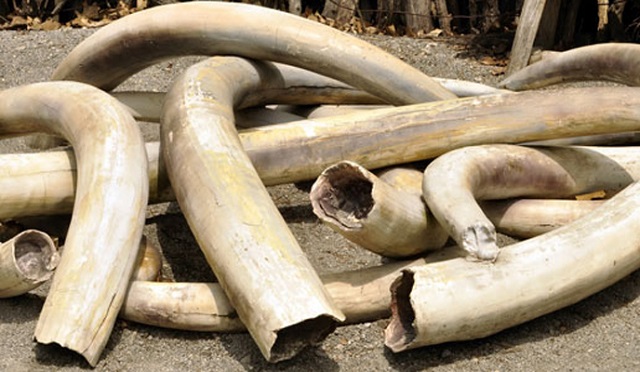Southern Africa must unite on CITES lobby come 2019

Zimbabwe and Namibia failed to convince parties to the Convention on International Trade in Endangered Species of Wild Fauna and Flora (CITES) in Johannesburg, South Africa, to legalise commercial ivory trade.
CoP17 attracted representatives of 152 governments and more than 3 500 people who took important decisions on the protection and sustainable utilisation of various animal and plant species worldwide.
Much of Zimbabwe’s interest was on its joint proposal with Namibia for CITES to remove all restrictions on trade in elephant and elephant products. South Africa had a similar interest. Botswana was also part of the lobby going into the September 24 to October 5 conference, but switched positions in dramatic fashion this week.
The four elephant range states in Southern Africa were facing a spirited counter-lobby by Benin, Burkina Faso, Central African Republic, Chad, Kenya, Liberia, Niger, Nigeria, Senegal, Sri Lanka and Uganda to totally ban all trade in the animal. Benin and others had the support of many influential CITES members in their bid to have the elephant uplisted from Appendix 2 that permits trade with annotations to Appendix 1 that prohibits any trade. They say an Appendix 2 listing exposes the elephant to poachers who might kill it to extinction.
Zimbabwe and Namibia argue that the elephant population in Southern Africa is not in danger of extinction. In fact, they say, populations are increasing which is causing immense challenges to their economies and much conflict between the animal and communities.
Although CITES rejected Zimbabwe and Namibia’s unrestricted trade proposal, the fact that delegates did not uplist the elephant to Appendix 1 as Benin and others wanted, must rank as a victory of sorts for the two Southern African countries. If the argument by Benin et al had carried the day, that was certainly going to cause greater social, economic and wildlife conservation challenges for Zimbabwe and Namibia.
Environment, Water and Climate Minister, Oppah Muchinguri, told ZBC on Wednesday that while her delegation wanted the annotations on the elephant to be removed, she was happy with the decision by CITES. She said Zimbabwe will continue with its sustainable exploitation of the animal and its products — ivory and its hide — for the benefit of the economy and rural communities that live around game parks that house the elephant.
Zimbabwe also wanted to be permitted to sell its 70-tonne ivory stockpile estimated to be worth $35 million but CITES rejected the proposal.
Therefore, it is as-you-were with regards to elephant trade for Zimbabwe, Namibia, South Africa and Botswana. They will continue with restricted trade in the animal, a position that precludes full economic benefits accruing to the country and the animal itself.
John Scanlon, CITES secretary-general said: “#CoP17 adopted decisions that saw wildlife firmly embedded in the agendas of global enforcement, development and financing agencies that have the capacity and technical expertise to help ensure implementation of the Convention on the front lines, where it matters most — with the CITES management and scientific authorities, as well as customs officials, rural communities, businesses, police, prosecutors and park rangers.
“Notable successes included decisions to bring new marine and timber species under CITES trade controls, continuing a trend from CoP16 where countries turned to CITES to assist them along the path to sustainability in oceans and forests. It was not just the well-known species that were on the agenda, the pangolin and many lesser known species also came under the spotlight.”
Apart from the rejection of all proposals to change the protection of Southern African elephant populations, other key decisions relevant to Zimbabwe included an agreement to close domestic markets in ivory where they contribute to poaching or illegal trade and the imposition of stricter monitoring and regulation of hunting trophies to bring them under trade control measures, including recommending conservation benefits and incentives for people to conserve wildlife.
Zimbabwe wanted a better deal, but the unchanged one is in itself better than what could have been had Benin and others succeeded.
However, we regret that with the controls remaining, the elephant population in our parks will continue to grow from the estimated 84 000, which is very high for the optimum carrying capacity of around 50 000 individuals. Much money will have to be spent looking after the animals yet not much revenue will derive from them. With the national herd set to continue growing and droughts becoming more frequent, competition for food and water will persist between humans — particularly for communities living near game parks — and the huge animal. The elephants will continue destroying their crops and homes and trampling upon people to death.
In the wake of the CITES decision, Zimbabwe will generate only a fraction of what the economy could potentially have done in an unrestricted market. As a result, not much income would go for conservation programmes. At the same time, more money would be used to secure the national ivory stockpile, an unnecessary outlay that could have been avoided had CITES approved Zimbabwe and Namibia’s proposals.
Furthermore, we regret that poaching is likely to continue occurring as trade restrictions tend to fuel the crime.
In the final analysis, it is a question of half a loaf being better than nothing. Zimbabweans therefore have to forge ahead living side by side with the elephant, hoping that CoP18 in Sri Lanka in 2019 will yield a better deal.











Comments